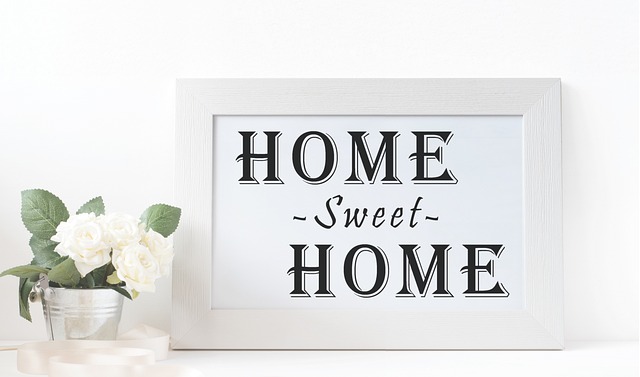A cliché is an overused expression lacking originality, while “touché” acknowledges a clever point or comeback.
Did you know that the average person encounters clichés hundreds of times each day? From advertising slogans to casual conversations, clichés are everywhere. But what about touché? You may have heard this term before, but do you know how it differs from cliché? In this article, we’ll explore the meanings of cliché and touché, their origins, and how they are used in different contexts. Let’s dive in and uncover the fascinating differences between these two commonly used expressions.
Key Takeaways:
- Touché is a response or remark used to acknowledge a clever point made by someone else, while clichés are overused phrases or expressions that have lost their originality and impact.
- Understanding the difference between cliché and touché allows writers to distinguish between predictable phrases and clever remarks, promoting impactful and original communication.
- Clichés can negatively impact writing, making it unimaginative and dull, while touché enhances conversations by appreciating well-crafted responses.
- Recognizing and avoiding clichés is important to maintain the uniqueness of one’s voice and enhance the quality of written work.
- By appreciating touché and avoiding clichés, individuals can engage in more meaningful and interesting conversations.
Defining Touché
“Touché” is a French expression widely used in English to acknowledge a clever or effective point made in a discussion or argument. It is derived from the fencing term meaning “touched” and conveys recognition of an opponent’s skill or a well-made remark. “Touché” is often used in a good-natured manner to appreciate wit, intelligence, or accuracy in a statement.
When someone says “touché,” it serves as a nod to the other person’s successful point or comeback. It signifies an acceptance that the opponent has made a valid argument or observation, highlighting their skill or cleverness in the conversation. This expression is commonly used in both formal and informal settings, such as debates, discussions, and friendly banter.
To better understand the meaning of “touché,” here are a few usage examples:
- During a heated political debate, one participant presents a compelling argument. The opponent responds with “Touché, you make a valid point.”
- In a lighthearted conversation, a friend makes a witty comment about their colleague’s fashion sense. The colleague responds with a smile and says, “Touché, well played!”
- During a sports commentary, the commentator acknowledges a brilliant move by a player from the opposing team with a quick “Touché!”
Note: The usage of “touché” adds a touch of sophistication and camaraderie to conversations, allowing individuals to appreciate and acknowledge cleverness and wit in a respectful and playful manner.
| Expression | Meaning |
|---|---|
| Touché | Acknowledging a clever or effective point made in a discussion or argument |
| Fencing Term: “Touched” | Recognizing an opponent’s skill or a well-made remark |
| Usage Examples | – During a political debate: “Touché, you make a valid point.” – In a lighthearted conversation: “Touché, well played!” – During a sports commentary: “Touché!” |
Defining Cliché
A cliché is an overused phrase, idea, or expression that has lost its originality, impact, or effectiveness due to frequent repetition. It is often considered trite or predictable. Clichés can be found in language, literature, art, and various forms of media. They lack creativity and fail to evoke genuine reactions, as their familiarity diminishes their communicative power.
| Examples of Clichés |
|---|
| The early bird catches the worm. |
| Every cloud has a silver lining. |
| Actions speak louder than words. |
| Love is blind. |
| It’s raining cats and dogs. |
Touché Vs. Cliché – Key Differences
Understanding the difference between clichés and touchés is essential for effective communication. While both terms are rooted in French, they have distinct meanings and implications.

Definition and Origin
The term “touché” originates from French fencing, where it means “touched.” In verbal exchanges, “touché” is used to acknowledge a clever or effective point made by someone else. It is a response that recognizes the opponent’s skill or a well-made remark.
On the other hand, “cliché” comes from the French word meaning “stereotyped” or “trite.” A cliché refers to an overused phrase, idea, or expression lacking originality. It has become stale and predictable through repetition.
Usage Tone and Context
- Touché: Used in response to a witty or skillful remark, “touché” carries a tone of appreciation and admiration. It acknowledges the effectiveness of the point made by someone else in an argument or discussion.
- Cliché: Clichés, on the other hand, are often employed in casual conversation, storytelling, or writing without much thought. They lack creative expression and often evoke a sense of predictability or boredom.
Intent and Effectiveness
When someone says “touché,” they acknowledge the cleverness or effectiveness of the point made by another person. It shows approval and recognition of a well-crafted response. In contrast, clichés signify a lack of creativity or originality. They fail to evoke genuine reactions or make a lasting impact because of their overuse.
Here is a summarized comparison between clichés and touchés:
| Cliché | Touché |
|---|---|
| Refers to an overused phrase, idea, or expression | Acknowledges a clever or effective point made by someone |
| Lacks creativity and impact | Expresses approval and recognition |
| Predictable and trite | Well-crafted and skillful |
By understanding the differences between clichés and touchés, individuals can enhance their communication skills and make more impactful contributions to discussions and debates.
Examples of Touché
Touché is a versatile expression used in various settings to acknowledge a valid point or counterargument. Whether it’s a lighthearted banter among friends or a serious debate in the workplace, touché adds a touch of wit and appreciation to the conversation. Here are some examples of touché in action:
1. Debates
In a heated political debate, one candidate makes a compelling argument against their opponent’s stance. The opponent responds with a thought-provoking counterpoint, to which the first candidate acknowledges with a playful “Touché!”
2. Discussions
During a group discussion about a complex issue, one participant presents a well-reasoned perspective that challenges the consensus. Another participant recognizes the validity of the argument and responds with “Touché, you’ve given me something to think about.”
3. Friendly Banter
Friends engaging in a playful back-and-forth may use touché to acknowledge clever comebacks or witty remarks. It adds a sense of camaraderie and appreciation for each other’s intelligence and humor.
4. Sports Commentary
While commentating on a tennis match, the commentator acknowledges a player’s skillful shot by exclaiming “Touché! What a perfectly placed forehand!” This emphasizes the player’s exceptional skill and accuracy.
5. Academic Discussions
In an academic setting, a student presents a well-constructed argument that challenges the professor’s established viewpoint. The professor, impressed by the student’s critical thinking, responds with “Touché, you’ve raised an interesting perspective.”
6. Workplace Interactions
During a team meeting, a colleague presents a well-thought-out solution to a recurring problem. Their idea challenges the status quo, and the team leader acknowledges their ingenuity by saying “Touché, I hadn’t considered that approach before.”
These examples showcase the versatile usage of touché in various conversations and settings. Its application adds a touch of appreciation and recognition to interactions, emphasizing the cleverness, intelligence, or well-crafted responses of others.
Example of Cliché
Clichés are commonly used phrases or expressions that have lost their originality and impact. They can be found in various contexts, such as love declarations, farewell cards, job interviews, weather descriptions, movie plot summaries, motivational speeches, apologies, and descriptions of friendship. These examples demonstrate how clichés lack creativity and fail to make a genuine impact in communication.
| Context | Examples of Clichés |
|---|---|
| Love Declarations | “You complete me.” |
| Farewell Cards | “Goodbye, it’s been nice knowing you.” |
| Job Interviews | “I’m a team player.” |
| Weather Descriptions | “It’s raining cats and dogs.” |
| Movie Plot Summaries | “They lived happily ever after.” |
| Motivational Speeches | “Don’t give up on your dreams.” |
| Apologies | “I’m sorry for your loss.” |
| Descriptions of Friendship | “Friends forever.” |
The Impact of Clichés in Writing
Clichés can have a detrimental effect on writing, diminishing its originality and dynamism. They often find their way into our content without conscious thought, stifling the expression of our unique voice. Recognizing and avoiding clichés is essential for fostering creativity and facilitating impactful communication. By understanding the distinction between cliches and touchés, writers can effectively differentiate between overused expressions and clever, thought-provoking remarks.
Finding and Avoiding Clichés
When it comes to writing, clichés can sneak into our work without us even realizing it. These overused phrases can make our writing feel stale and unoriginal. But fear not! There are simple ways to identify and avoid clichés, allowing you to create unique and engaging content.
1. Read Aloud and Visualize
One effective method to find clichés in your writing is to read your work out loud. This allows you to hear how your words flow and identify any phrases that sound tired or overused. Additionally, try to visualize the images and scenes created by your writing. If they feel familiar or unoriginal, it’s a sign that clichés may be present.
2. Analyze for Uniqueness
Analyze each sentence in your writing to determine if it appears in anyone else’s work. This can be done by conducting online searches or using plagiarism-checking tools. If your words match existing content, it’s likely that you’re using clichés. Replace these common phrases with fresh, unique expressions to make your writing stand out.
3. Harness the Power of Cliché Checkers
To avoid the dreaded “cliché creep,” utilize tools such as ProWritingAid’s Cliché Check. This powerful tool analyzes your content and highlights any phrases that may be clichés. By relying on these helpful resources, you can identify and rectify potential clichés before your work reaches your readers.
Remember, avoiding clichés is not about completely eliminating common phrases from your writing. Instead, it’s about recognizing when they undermine the creativity and impact of your work. By replacing clichés with unique expressions, you can enhance the quality of your writing and create a more engaging experience for your audience.
| Tips to Find and Avoid Clichés |
|---|
| Read your work aloud |
| Visualize the scenes and images created by your writing |
| Analyze for uniqueness by conducting online searches |
| Utilize plagiarism-checking tools |
| Use tools like ProWritingAid’s Cliché Check |
| Replace clichés with unique expressions |
Conclusion
In conclusion, understanding the difference between cliché and touché is crucial for effective communication. While touché acknowledges a clever point, cliché refers to an overused expression. Recognizing and avoiding clichés allows writers to promote originality and impactful communication, enhancing the quality of their work.
By appreciating a well-crafted response and avoiding predictable phrases, individuals can engage in more meaningful conversations. A strong command of language empowers writers to convey their ideas with freshness and creativity, ensuring that their message resonates with readers or listeners.
As writers strive to captivate their audience and stand out in a sea of information, understanding the distinction between cliché and touché becomes paramount. By offering thoughtful and unique perspectives, writers can elevate their content and make a lasting impression in the minds of their readers.
FAQ
What is the difference between cliché and touché?
While “touché” is used to acknowledge a clever or effective point made in an argument, “cliché” refers to an overused phrase or expression that lacks originality.
What does “touché” mean?
“Touché” is a French expression widely used in English to acknowledge a clever or effective point made in a discussion or argument.
What is a cliché?
A cliché is an overused phrase, idea, or expression that has lost its originality, impact, or effectiveness due to frequent repetition.
What are the key differences between touché and cliché?
Touché acknowledges a clever or effective point, while cliché describes an overused phrase lacking originality. Touché originates from the French fencing term meaning “touched,” while cliché comes from the French meaning “stereotyped” or “trite.”
Can you provide examples of touché?
Examples of touché include acknowledging a well-crafted response in debates, discussions, friendly banter, sports commentary, academic discussions, and workplace interactions.
Can you provide an example of a cliché?
An example of a cliché is saying “actions speak louder than words” to imply that someone’s actions carry more weight than their words.
How do clichés impact writing?
Clichés make writing unimaginative and dull as they lack creativity and fail to make a genuine impact in communication.
How can writers find and avoid clichés?
Writers can find clichés by reading their work aloud, analyzing each sentence for familiarity, and using tools like ProWritingAid’s Cliché Check. To avoid clichés, writers can replace them with unique expressions.
Why is it important to understand the difference between cliché and touché?
Understanding the difference allows writers to distinguish between overused expressions and clever remarks, promoting originality and impactful communication.
Source Links
- https://differencedigest.com/education/language/what-is-the-difference-between-touche-and-cliche/
- https://whatthefluffy.wordpress.com/2011/06/23/touche-cliche/
- https://prowritingaid.com/list-of-cliches
Image Credits
Featured Image By – Tumisu from Pixabay









